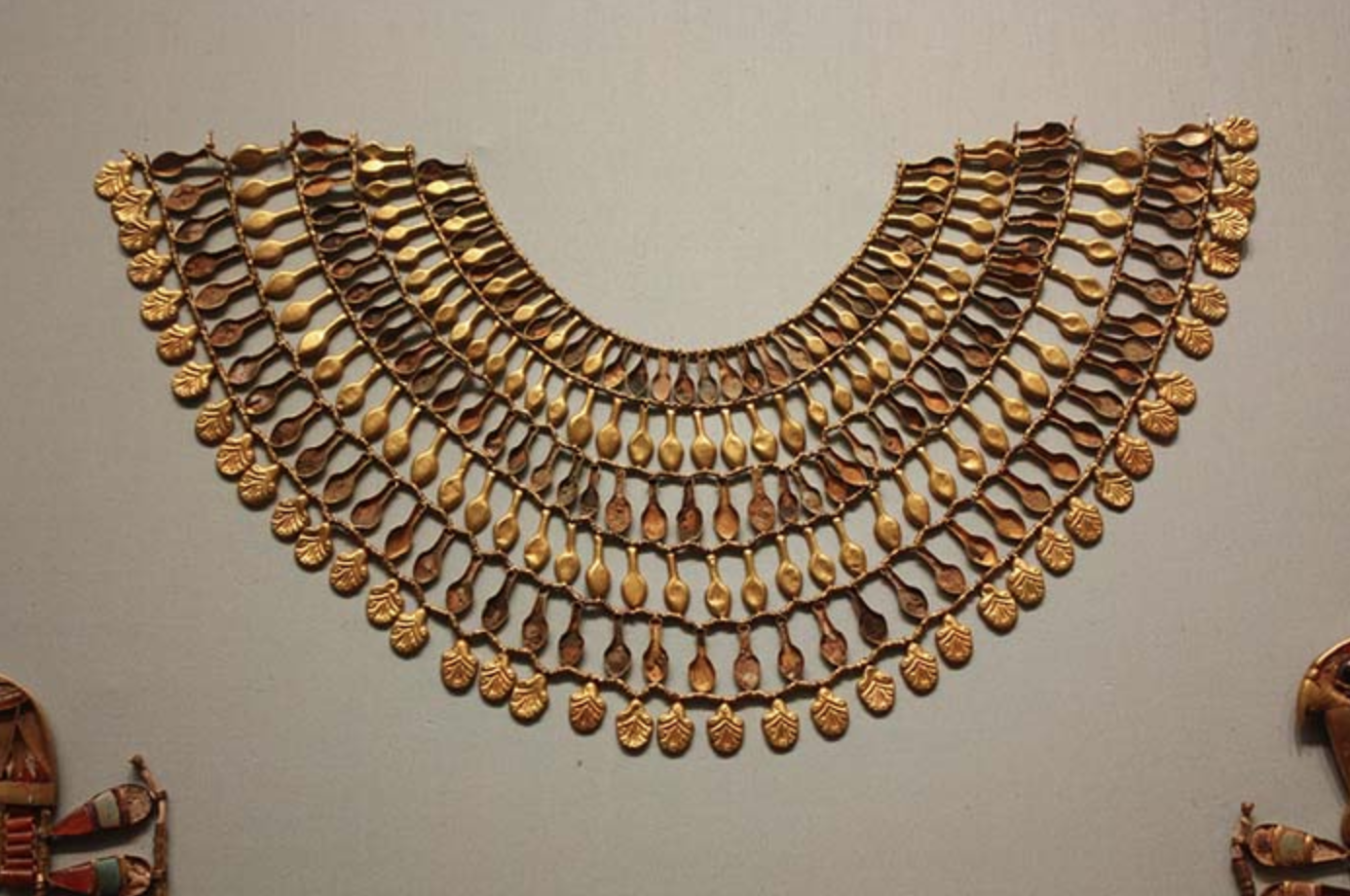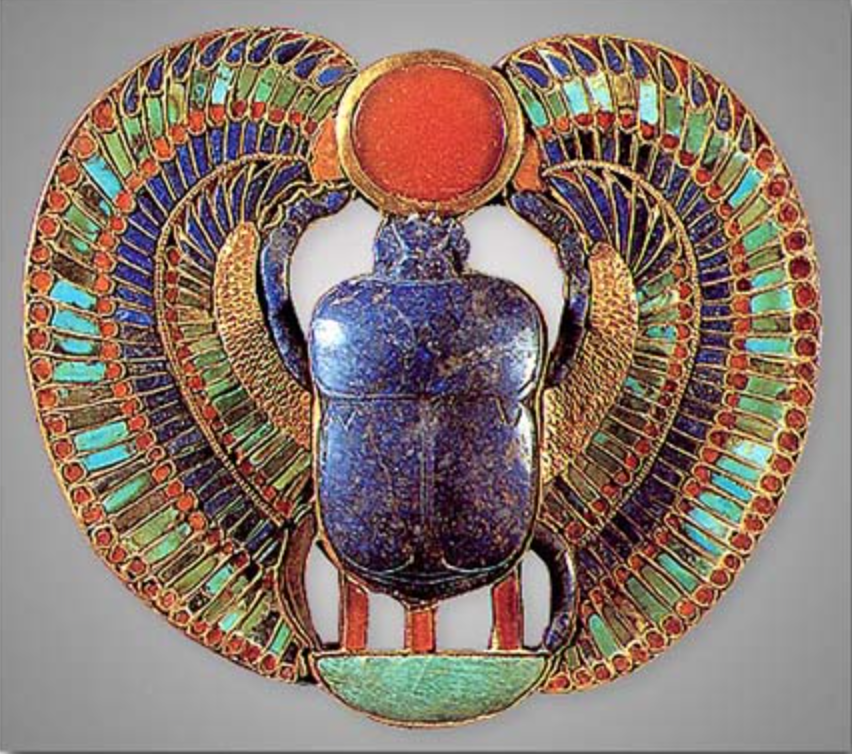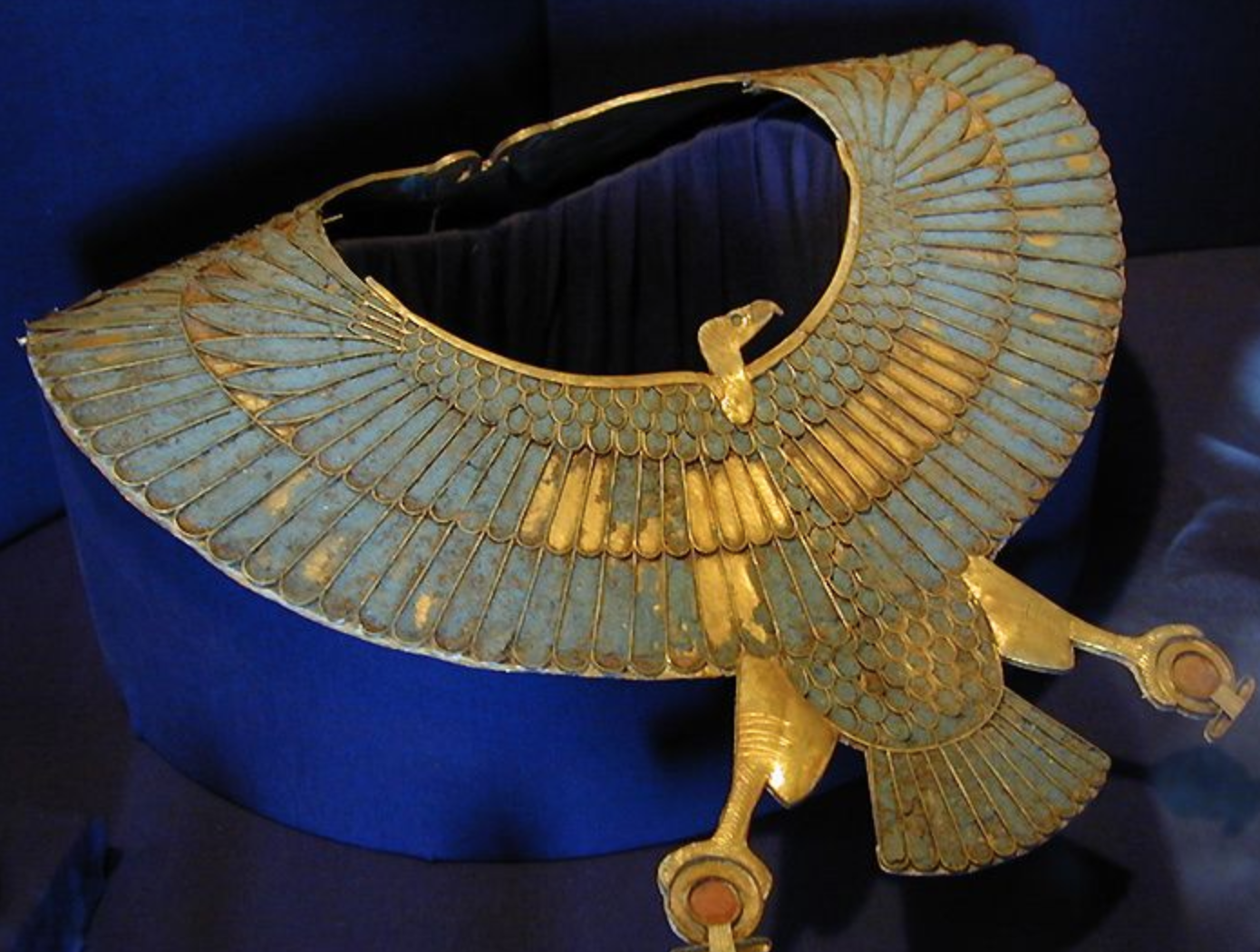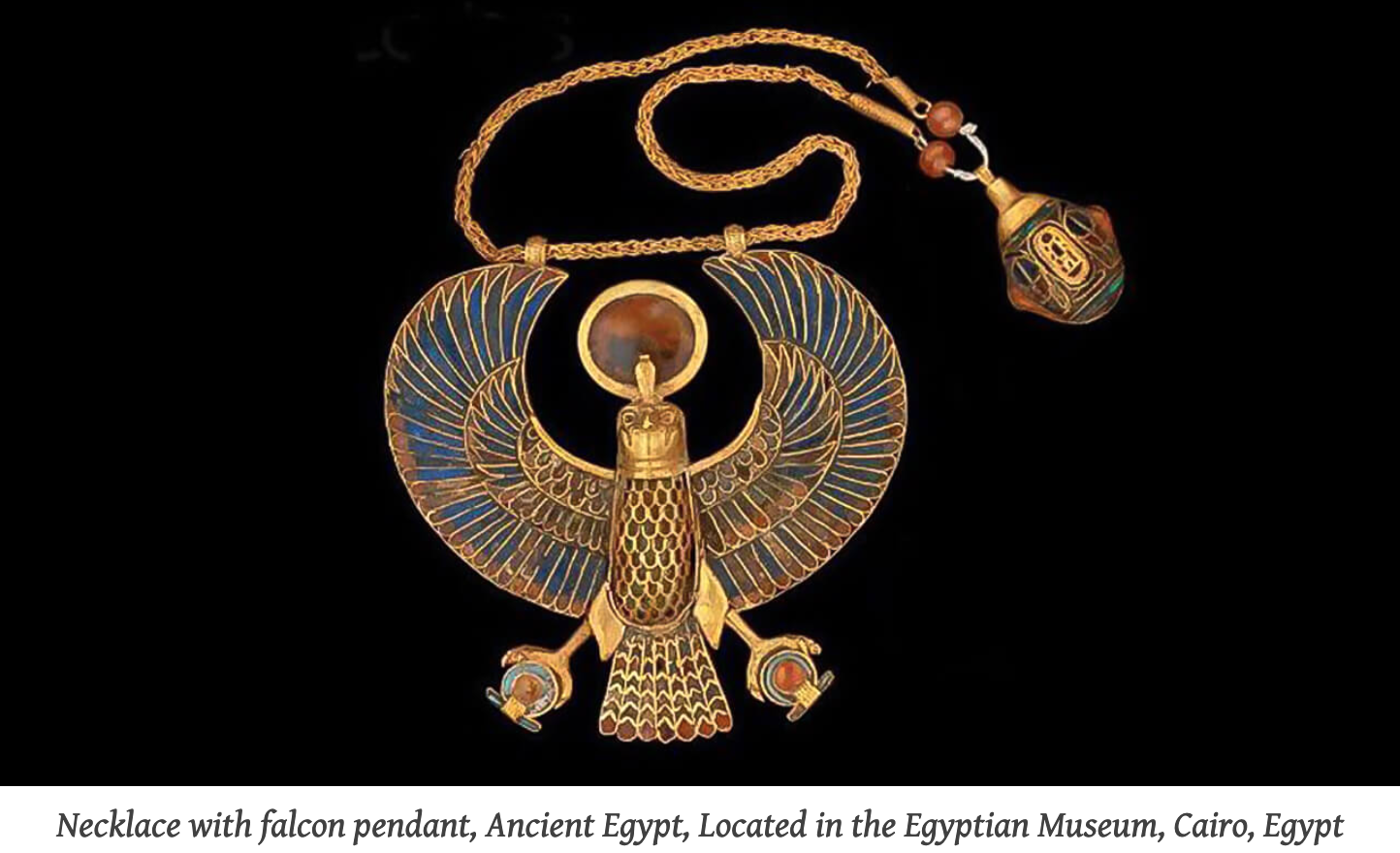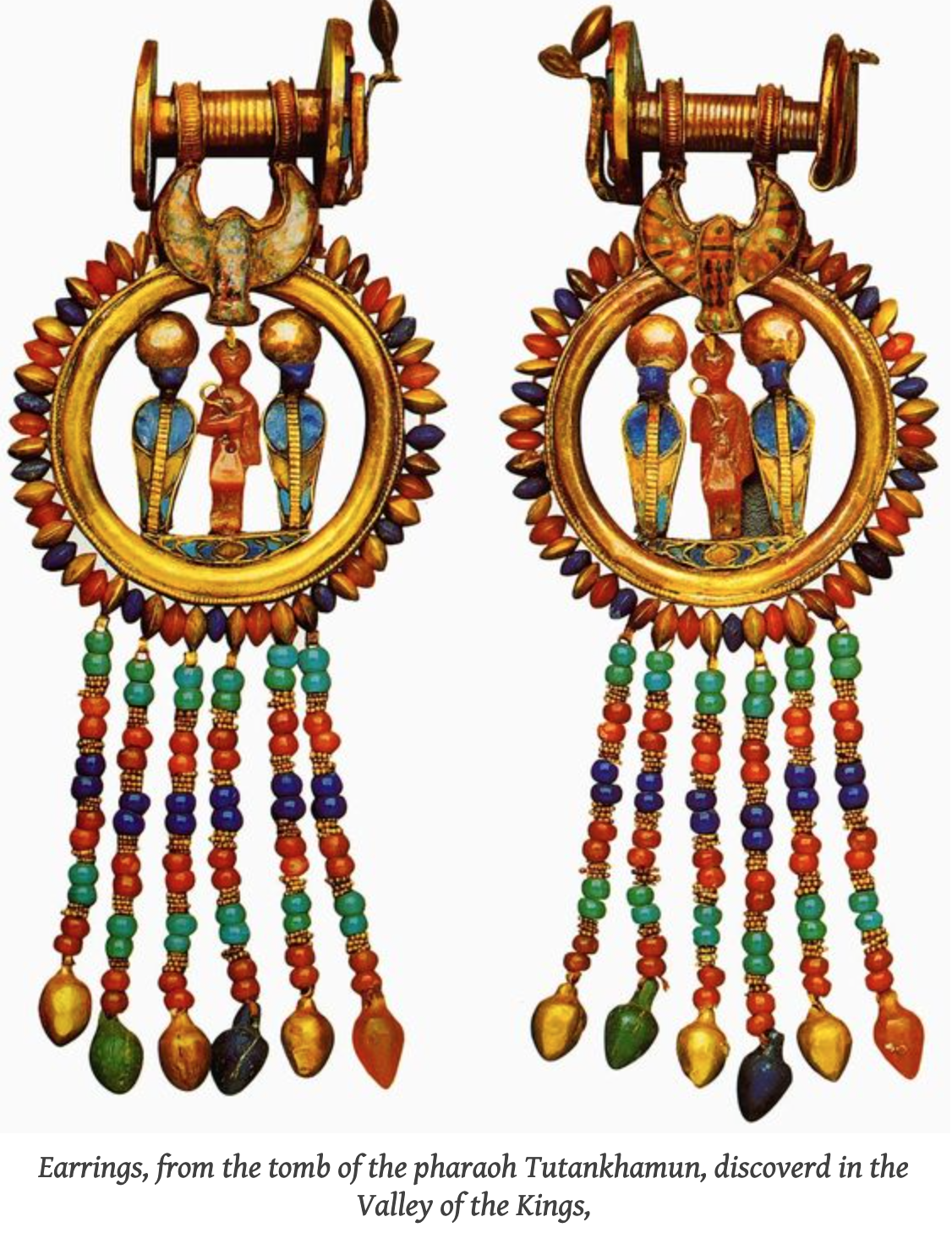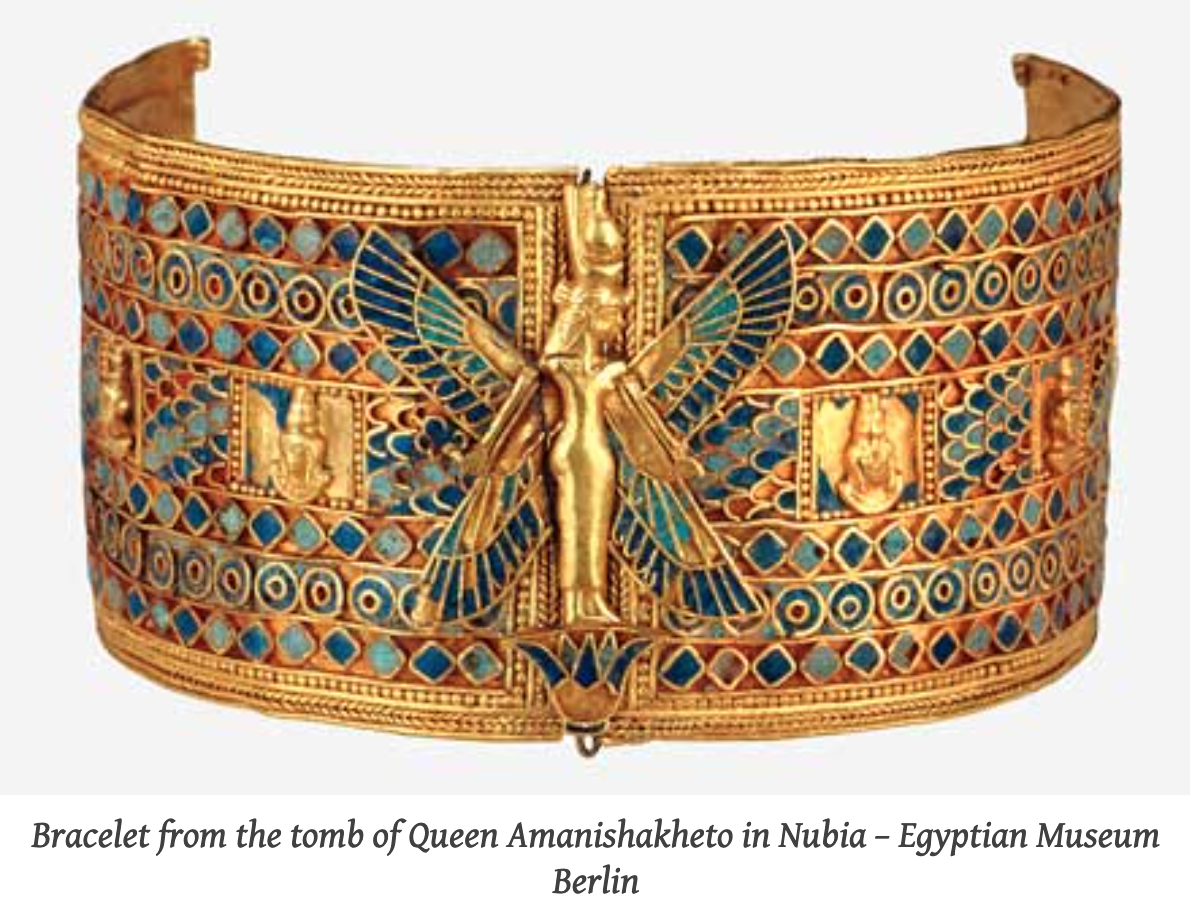'MORE YOU KNOW' MONDAY ::: VOL. 3
Ancient Egypt (there is so. so. much. body adornment history in Egypt and condensing was tricky soooo…get those eyeballs ready to do a chunk of reading then feast on some gorgeous photos!)
Except for the slaves, all ancient Egyptians wore heavy, brightly colored jewelry and it was highly valued. Not only did jewelry reflect the wealth and social status of its wearer, it was thought to help ward off evil spirits, both here and in the afterlife.
Men, women, and children routinely adorned themselves with the best jewelry they could afford in an assortment of styles. An abundance of jewelry indicated that the gods were happy with the wearer and was thus blessing him or her.
The dead were entombed with their own jewelry as well as items belonging to family members, which helped ensure their success in the afterlife. Most ancient Eqyptians wore collar pieces which ranged from extravagant to simple, depending on the status of the wearer, and wealthier Egyptians would often have their most elaborate collar pieces entombed with them.
Except for the pharaoh's jewelry, less emphasis was placed on the type of metal used in the jewelry than it was on the type(s) of stone(s) that adorned it. Some stones and colors used in ancient Egyptian jewelry were thought to have special significance to the wearer and were therefore more popular. Certain colors were thought to provide health benefits, which accounts for the prodigious use of color in ancient Egyptian jewelry.
Certain items of jewelry, such as the scarab, carried religious significance to the ancient Egyptians. The scarab represented rebirth, so it was essential to have one or more scarabs adorning the deceased in order to ensure reincarnation to the next level. The owner's name was inscribed on the stone so that his spirit would know it was his.
Although children under 6 years old usually didn't wear clothing, they wore jewelry. The amount and quality of their ancient Egyptian jewelry depended on their parents' status, but all children wore jewelry unless they were slaves.
Wealthier classes used primarily gold and some copper for their jewelry, while lower classes used mainly copper. Silver was scarce to unknown in ancient Egypt since there were no silver mines at hand. By combining various elements with gold, jewelers created other colors such as rose, grey, and reddish brown. The addition of tin to copper yielded bronze, which was both harder and much more attractive than tin.
These wealthier Egyptians made abundant use of precious and semi-precious stones, with lapis lazuli being their favorite. Its deep blue hue denotes honor, royalty, wisdom, and truth; King Tutankhamen's tomb was liberally inlaid with lapis lazuli.
Polychrome glass was used for colorful jewelry and beads, as well as for pottery, in vivid hues of green, red, yellow, and blue. Other gemstones used in ancient Egyptian jewelry included:
Emeralds, which were for immortality and fertility
Malachite, which promoted healing
Garnet, which symbolized the extremes of anger and fire, and victory and life
Turquoise, which symbolized life and happiness
Carnelian, which was believed to purify the blood, symbolized stability and protection
Obsidian, which symbolized death
Amethyst, which denoted royalty

